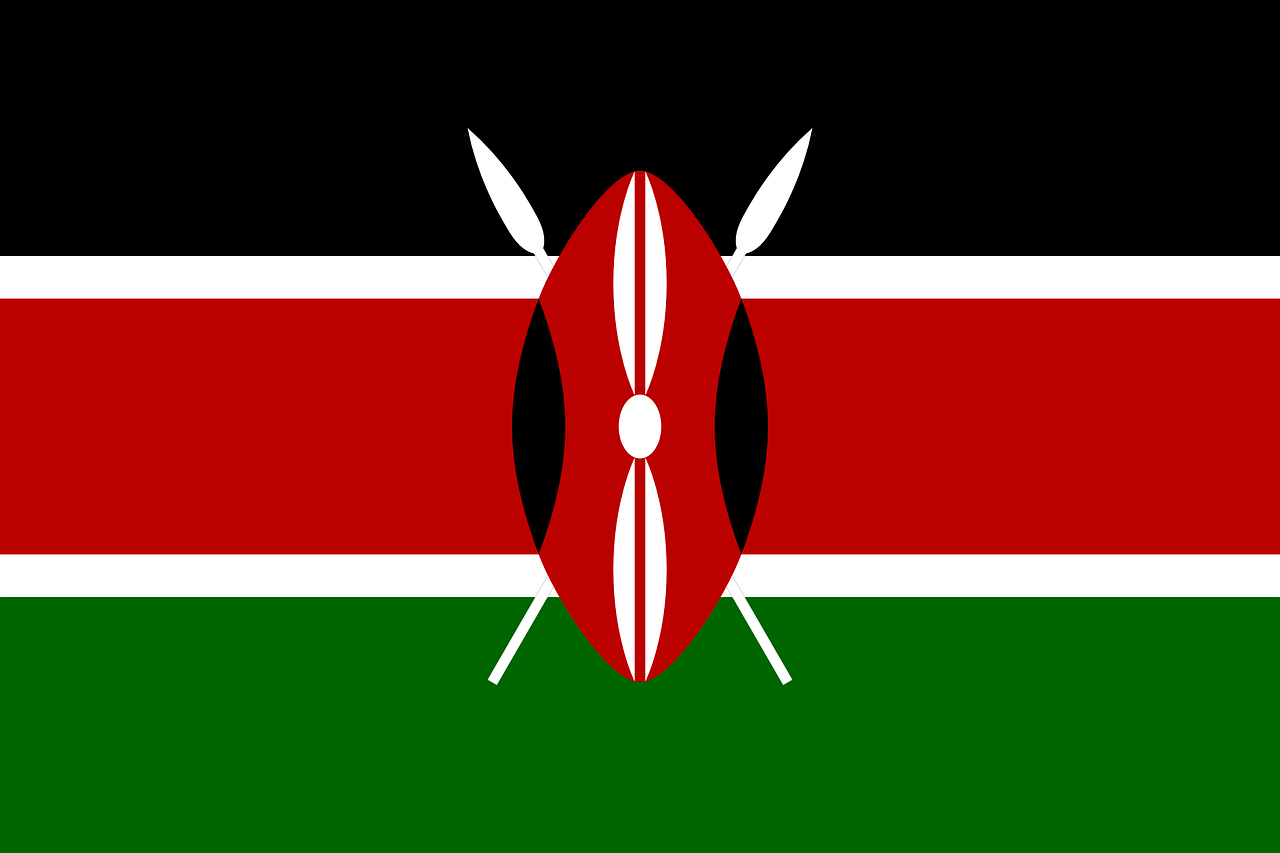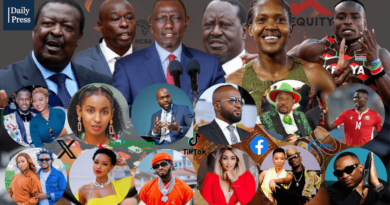Know Your Luhya Clan
The Luhya are Bantu speaking people with 18 sub-tribes. Each clan has different clans. The Luhya people are found within the Western part of Kenya. They speak the native Luhya language. However each clan has its own dialect that differentiates them from other clans.
Further more each clan within a subtribe has different articulation of words in their language that differentiates them from each clan. The Luhya tribe is the second largest tribe in Kenya behind the Kikuyu.
Below is a List of all Luhya Clans and sub-clans.
List Of All Luhya Sub-tribes and Clans in Kenya
1. Kisa
The Kisa is also known as the Abakisa or Abashisa. They live in the Khwisero district and speak in a dialect known as Olushisa. The clans of the Kisa include the following; Ababoli, Abakambuli, Abakhobole, Abakwabi, Abamurono, Abaruli, Abashirotsa, Abalukulu, Abamanyulia, Abashirandu, Abamatundu, Abachero, and abalakayi among others.
2. Marama
The Marama live mainly in districts of Butere. They speak in Lumarama dialect. Some of the clans of Marama include but not limited to; Abashitsaha, Abacheya, Abatere, Abashirotsa, Abamukhula, Aberecheya, Abamumbia, Abamatundu, Abanyukhu, Abakhuli, Abakokho, Abashieni, Abamani, Abashikalie, Abakara, and Abatsotse.
3. Batsotso
The Tsotso live in the western part of Kakamega and speak in a dialect known as Olutsotso. The major clans of the tsotso include; Abamweche, Abashisiru, Abashibo, and Abangonya.
4. Maragoli
The Maragoli are among the hugely populated sub tribes of the Luhya. They occupy Vihiga region and speak in the Lulogooli dialect. The clans of the Maragoli include but not limited to; Avasanga, Avagitsunda, Avamumbaya, Avamuzuzu, Avamasingira, Avamaseero, Avasaali, Avakizungu, Avagamuguywa, Avasaki, Avamageza, Avagizenbwa, Avakirima, Avamaabi, Avamutembe, Avayonga, Avasaniaga, Avakebembe, Avagonda, Avanoondi, Avalogovo, Avasweta, Avaliero, and Avavurugi.
5. Idakho
The Idakho live in the southern region of Kakamega County. The dialect of the Idakho is called Lwidakho. The Idakho like most Luhyia sub tribes practice circumcision of the males as a rite of passage from childhood to adulthood.
Some of the clans of the Idakho include; Abangolori, Abamahani, Abamusali, Abamuhali, Abashimuli, Abashikulu, Abashiangala, Abamasaba, Bakobe, Bakase, Bakhubi, Bamanyisi, Bashitsiula, Bamahani and Babwanishili.
The Idakho people is one of the Luhya sub tribes known for amazing cultural practices like the Isikhuti dance. Other activities that the Idakho people involve in include pot making, and gold digging along River Yala and Sigalagala.
6. Bukusu
The Bukusu is one of the largest Luhya sub tribes of Kenya. The Bukusu live in Bungoma and Mount Elgon region. They speak Lubukusu and practice circumcision as a rite of passage from childhood to adulthood. The Bukusu myth of origin states that their god, known as Were Khakaba created the first humans Mwambu and Sela who gave rise to the entire tribe.
The Bukusu has so many clans. A clan constitutes a people of common ancestry. These Clans include; Batura, Bamalaba, Banywaka,Banyangali, Bamwale, Bakikayi, Bhatasama, Bhakiyabi, Basirikwa, Baechale, Bhatemlani, Bhasakha, Baechalo, Bakibeti, Bakikai, Bhakitang’a, Bakhisa, Bamwayi Bamwaya, Baluleti, Babasaba, Bang’oma, Basakali, Bakhurarwa, Bakamukong’I, Bakiabi, Baliuli, Batilu, Bakhurarwa, Bamuki, Bakhona, Bakhone, Bakimwei, Bakoi, Bameme, and Basombi among others. Shadrack Amakoye Bulimo lists all the clans of the Bukusu in his book: Luyia Nation: Origins, Clans, and Taboos, you can grab the book know all there is to be known about the Bukusu.
7. Wanga
The Wanga speak the Oluwanga dialect and live in Matungu and Mumias districts. The Wanga was under the rulership of Nabongo Mumia and being a clan with twenty-two clans; it was a sub tribe that was fortified in both food resource and security. The clans of the Wanga include; Ababule ,Abamulembwa, Abashitsetse, Abakolwe, Abalibo, Abang’ayo, Abaleka, Abachero, Ababonwe, Abatsoye, Abamurono, Abashieni, Abakulubi, Abang’ale, Abambatsa, Abashibe, Abakhami, Ababere, Abamwende, Abamwima, Abashikawa, and Abamuniafu.
8. Kabras
The Kabras occupies the northern region of Kakamega district. Their language is Lukabarasi, a dialect that sounds nearly the same as the Tachoni dialect. The Kabras split from the Banyala sub tribe. Today, they occupy Malava in Kabras division in Kakamega County. The Kabras are living between three other sub tribes; Tachoni, Isukha, and Banyala.
You would think that they derived the name from the division they live in, but the word ‘Kabras’ has a deeper meaning. The word is derived from Avalasi, a word that means ‘Mighty Hunters’ or ‘Warriors.’ This name denotes the fierceness of the Kabras people as they engaged in endless battles with the Nandi community for cattle and pastures.
It is believed that they lost their numbers to these fights and that is why they are among the fewer Luhya sub tribes by numbers as compared to the Bukusu and the Maragoli. One interesting belief that the Kabras hold dearly is that they are the descendants of Nagwiro who is linked with Nimrod of the bible. Any Kabras would state this claim as a matter of fact, and the claim is enunciated with religious reverence, and pride of belonging.
Some of the Kabras clans include, but not limited to; Abakhusia, Bamachina, Abamutama, Basonje, Baluu, Batobo, Bamakangala, Abamutsembi, Bachetsi, and Abashu. Nabongo Mumia of the Wanga was the ruler of the Kabras. A Kabras elder represented them at the council of elders and saw to it that they got what every other sub tribe under the ruler got. The most known elder to have represented the Kabras in the council of elders was Soita Libukana Samaramarami.
Soita came from Lwichi village located in Central Kabras not far from Chegulo market. The Kabras are among the Luhya sub tribes who welcomed Arthur Chilson, a missionary who established Quakers missionary churches that were christened Friends Church. The missionary lived among them and even had his children speaking in Kabras. This happening showed another side of the Kabras who were believed to be fierce; they could also be hospitable.
9. Banyole
The Banyole occupies Bunyore region in Vihiga. They speak in a dialect known as Olunyole. Some of the clans of the Nyole are; Abamutete, Abakanga, Abayangu, Abamukunzi, Abanangwe, Abasiloli, Abasiralo, Abalonga, Aberranyi, Abatongoi, Abasikhale, Ab’bayi, Abakhaya, Abamang’ali, Abasubi (Abasyubi), Abasakami, Abamuli, Abasiratsi, and Abasiekwe.
10. Bakhayo
The Khayo sub-tribe occupy the Matayos Divison in Busia county and Nambale District. The Khayo speak in a language known as Lukhayo. Some of the clans in the Khayo sub-tribe include; Abasota, Abakhabi, Abaguuri.
11. Banyala Ba Ndombi & 12.Banyala Ba Busia
The Nyala occupy Busia County and speak Lunyala. Other Nyala can also be found in Kakamega in the North-West region. The Nyala groups who occupy Kakamega are known as the Abanyala ba Kakamega. Though the Banyala of Kakamega might be living in a different location, they speak the same dialect as the Banyala of Busia. In fact, the Banyala of Kakamega lived in Busia before being led to Kakamega by a leader called Mukhamba.
Mukhamba was a revered leader among the Abanyala ba Kakamega, but he is not the only notable leader as they also had a colonial chief known as Ndombi wa Namusia who was a very powerful political figure who was entrusted with political and social affairs of his people until he was succeeded by his son known as Andrea.
The clans within the Banyala include; Abahafu, Ababenge, Abayisa, Abayundo, Abachimba, Abadavani, Abasiondo, Abachende, Abaengere, Abakangala, Abayaya, Abayirifuma, Abakhubichi, Abakoye, Abaumwo, Abacharia, Abakwangwachi, Abalanda, Abaucha, Abauma, Abalecha, Abalindo, Abasuu, Abatecho, Abamani, Abalindavyoki, Abasumba, Abasonge, Abamisoho, Abamuchuu, Abasia, Abasiloli, Abamugi, Abamulembo, Abasakwa, Abasaya, Abamani, Abaokho, Abasaacha, Abamwaya, and Abasenya. Since the clans share a common ancestry, it is a taboo for a Banyala to marry from the same clan.
13. Samia
The Sacmia lives majorly in the southern parts of Busia District, currently, Busia County. Part of the Samia occupies Eastern Uganda. The main economic activities of the Samia are fishing in Lake Victoria, crop farming, and animal rearing.
The Samia value music and most of their ceremonies are punctuated by cultural songs and folklore. Among the many clans of the Samia are; Abalala, Abadongo, Abatabona, Abasonga, Ababuri, Abakhulo, Ababukaki, and Abakangala.
14. Bamarachi
The Marachi speak Lumarachi and live in Butula in Busia County. The Marachi trace their ancestry from Ng’ono Mwami’s father who was also known as Marachi, the son of Musebe. Musebe was the son of Sirikwa. The Marachi were a fierce people who fought the Luo of Jok Omollo who were expanding to exercise control of Nzoia and Sio Rivers.
The Marachi won the war and gained control of port Victoria and Sio Port. They used these ports as fishing grounds. Some of the Marachi clans include; Ababere, Abade, Abasubo, Abafofoyo, Abamuchama, Abang’ayo, Ababule, Abatelia, Abapwati, Abasumia, Abarano, Abamutu, Ababonwe, Abamucheka, Abaliba, Ababirang’u, Abakolwe , Abatula, Abamurono, Abasimalwa, Abakwera, Abakolwe, Abamalele, and Abamulembo among others.
15. Tiriki
Like their name suggests, the Tiriki occupy the Tiriki region in Vihiga. The Tiriki speak a Ludiliji dialect. Some of the clans in of the Tiriki are; Balukhoba, Baguga, Basuba Baumbo, Bamabi, Badura, Bamuli, Barimuli, Basianiga, Balukhombe, Bamiluha, Bashisungu, and Bajisinde.
16. Isukha
The list of Luhya sub tribes wouldn’t be complete without mentioning the Isukha. The Isukha occupies the eastern part of Kakamega County and is also known for the Isikhuti dance. Some of the clans in Isukha include; the Abakusi, Abakondi, Abamwilonje, and the Abamahalia.
17.Tachoni
The Tachoni occupies Bungoma, Lugari and Malava regions. They speak in the Lutachoni dialect.
They are considered the Most proud but very intelligent among the Luhyas.
Some of the clans of the Tachoni includes; Abasioya, Abaviya,Abasang’alo, Abangachi, Abatecho, Abachambai, Abamarakalu, and Abaengele. Other Tachoni clans include the Saniak that occupies Tanzania and Saniaga clan living among the Maragoli of Kenya.
18. Batura
Abatura Speak Olutura and are found in the three Mulembe counties of Kakamega, Busia, and Bungoma. Their main clans are Bakhauka, for a lady Nakhauka, who are mainly found in Khasoko area of Bungoma County.
Bakhibe, for a lady again Nashibe , found partly in Mungore and Namatotoa again in Bungoma County. Bamutiru, for a lady Namutiru are found in both Lung’anyiro nd Nanyeni Sublocations of Koyonzo location and ward in Matungu Constituency, Lastly, we have the Batsoye, for a lady Nabatsoye who are found in the following sublocations of Matungu sub-county.
Munami, Mirere, Namamali, Lung’anyiro, Nanyeni, Musamba, Khalaba, and Namulungu sub-locations.lt should be noted that Bashibe are also found in Mirere and Koyonzo Sublocations.
Read>>>Learn Swahili: Mazingira and Mazingara- Here is the big difference


